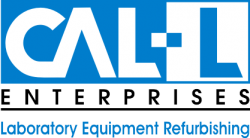A new universal petrochemical analyzer combines the speed of ballistic gas chromatography (GC) with the ability of high-pressure mass spectrometry (HPMS) technology to identity molecules at lower limits.
Officials with Boston-based 908 Devices Inc. are seeking to “democratize” chemical analysis with mass spectrometry by freeing it from its Achilles heel, the complex vacuum pumping system. Founded in 2012 and recognized as an Energy Innovation Pioneer at this year’s IHS CERAWeek Conference, 908 Devices co-founder and CEO Dr. Kevin J. Knopp said the new G908 analyzer can improve efficiency and cost savings across a range of applications for the upstream, midstream and downstream oil and gas sectors.
908 Device’s GC-HPMS technology provides smaller systems that can detect impurities in natural gases and sulfur species, identify low-level oxygenates, and monitor BTEX (benzene, toluene, ethylbenzene, and xylenes), according to a March 22 company press release. Other advantages include shorter analysis cycle times, the ability to detect compounds and impurities quickly, and catching potential problems earlier in the production process. The G908 also integrates with existing analysis workflows and requires little to no training.
GC has been widely used in the oil and gas industry for decades. GCs – two-foot, cubed boxes that are like household ovens – contain a column, or tube, that is coated on the inside. Gas on one side of the GC flows through, and interacts with, the coating along the length of the column before exiting over a 30-minute period. Gases and molecules interact differently with the coating; these unique interactions cause gases and molecules to emerge at different times, Knopp explained. Historically, oil and gas companies have determined a molecule’s identity by its exit time from GCs, Knopp said.
“The problem with this method is that you don’t actually know what is coming out,” Knopp explained. Oil and gas companies must rely on historic data of when certain molecules emerge, and a great deal of work on calibration and standards is still needed to characterize the column.
Conventional GCs are inherently slow at raising and lowering temperatures through a measurement cycle. Conventional GCs also have other flaws, including their large energy requirements, need for continuous recalibration, and lack of sensitivity and selectivity in identifying specific compounds at the molecular level, said Knopp.
By adding smart detectors based on mass spectrometry, a molecule’s identity, as well as the time it comes out, can be confirmed. Ballistic CG allows for a faster approach – heating and cooling far more rapidly than traditional GC – while the high pressure-mass spectrometry enables oil and gas companies to look at molecules at much lower concentration limits. This speed permits the entire measurement process to be compressed by a factor of 10 or more, Knopp said.
Traditional large-frame GC-mass spectrometry systems can provide specific compound identification, but their high cost, intensive maintenance and training burdens mean they are relegated to labs. Conventional mass spectrometers weigh upward of 200 pounds and are attached to a huge vacuum pump on the floor. The G908 offers GC-HPMS capability in a 28-pound box, is rugged and designed with handles so it can be transported in the field. Workers of all skill levels can conduct tests inline, at-line, in a laboratory or in remote field settings, all at the point of need with one device. The industry’s monitoring and evaluation of wells, pipelines, feedstocks and processes – and the low oil price environment, market dynamics and fluctuations in workforce it faces – creates a clear need for the company’s combination of ballistic gas chromatography with high-pressure mass spectrometry technology in oil and gas, Knopp said.
He quoted figures from Strategic Directions International that the mass spectrometry market across all industries is valued at $3.5 billion per year. The market for gas chromatography process or product evaluation is estimated at about $2 billion per year.
Out of the $2 billion market, only a few hundred million is associated with GC mass spectrometry. GCs are used everywhere – with petrochemical labs having multiple conventional GCs but only one GC-mass spectrometry machine –but the way that mass spectrometry has been implemented into oil and gas means that it’s relegated to central labs, Knopp said.
Knopp believes that more companies would use GC-mass spectrometry technology to identify molecules, but can’t justify doing so because of the cost, complexity and ongoing sustainment of conventional large-frame GC-mass spectrometry systems.
Knopp and co-founders started 908 Devices after becoming interested in the ability to measure small gas, solid and liquid material at the parts per million or less level. The company was named for the .908 stability-instability parameter point at which the company’s technology ionizes a chemical, putting a charge on it and manipulating it within a 3D space until it’s ready to spin out. The .908 is incorporated into the company’s logo to indicate the company is trying to make a personal device, rather than a large, complicated instrument.
908 Devices’ high-pressure mass spectrometry technology was initially utilized by the military. 908 Devices’ HPMS technology then caught the attention of oil field services company Schlumberger and producer Saudi Aramco. Since 2013 and 2015, 908 Devices has partnered with Schlumberger and Saudi Aramco respectively to launch HPMS technology solutions for applications throughout oil and gas. Knopp said 908 Devices’ oil and gas partners see the analytical horsepower of 908 Devices technology. While he couldn’t discuss specific details about the company’s work with Schlumberger, he did say the “fruits of labor” of that partnership are seen in the G908.
Knopp sees opportunity for the company’s technology in the current oil and gas market, which has seen numerous operators slash spending plans and lay off thousands of workers. Simple technology solutions will be needed, particularly as younger workers who are comfortable with iPhone-like technology, come up through the ranks. Such technology is not only easy to use, but can help keep costs low.
